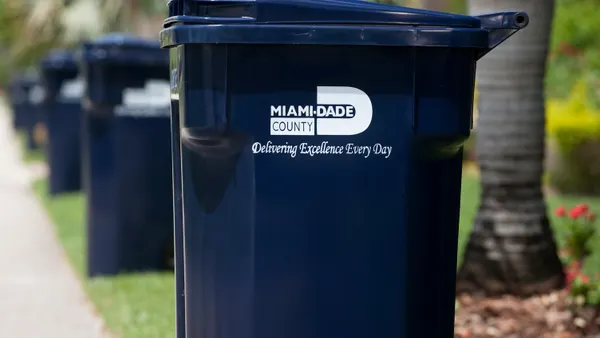Dive Brief:
- A report from the Rubber Manufacturers Association (RMA) notes that scrap tire piles have declined by more than 93% over the past two decades, leading to many environmental benefits.
- Of more than one billion scrap tire piles that existed in 1990, only about 70 million remain according to the report. 70% of these remaining piles exist in Colorado and Texas, while a majority of the remaining trouble areas exist in Arkansas, Illinois, North Carolina, Ohio, Pennsylvania, Virginia and Washington.
- RMA notes that the reduction of scrap tire piles has reduced the risk of stockpile fires and the risk of such piles becoming breeding grounds for disease-carrying mosquitos. Additionally, nearly 90% of scrap tires generated annually are used in end use markets like ground rubber or tire-derived fuel.
Dive Insight:
Tackling scrap tire piles has been a waste industry-driven initiative for many years, while states like New Jersey have conducted audits to assess the issue at hand. Additionally the recent outburst of the Zika virus has sped up cleanup efforts as health officials have warned that such stockpiles are highly attractive to mosquitos.
Earlier this year, South Dakota made $650,000 available to stop the spread of the Zika virus through tire collection efforts. Additionally, officials in Hawaii increased tire collection and recycling to reduce the spread of Dengue fever.
Clearly since 1990, tires have been more widely reused for the production of other materials and that trend is bound to continue. In August, researchers from Texas A&M University said they even found a new method for creating synthetic rubber that could be used in the manufacturing of biodegradable tires. As such developments are made, the industry may be seeing more simple disposal methods for tires, leading to further environmental and health benefits.









